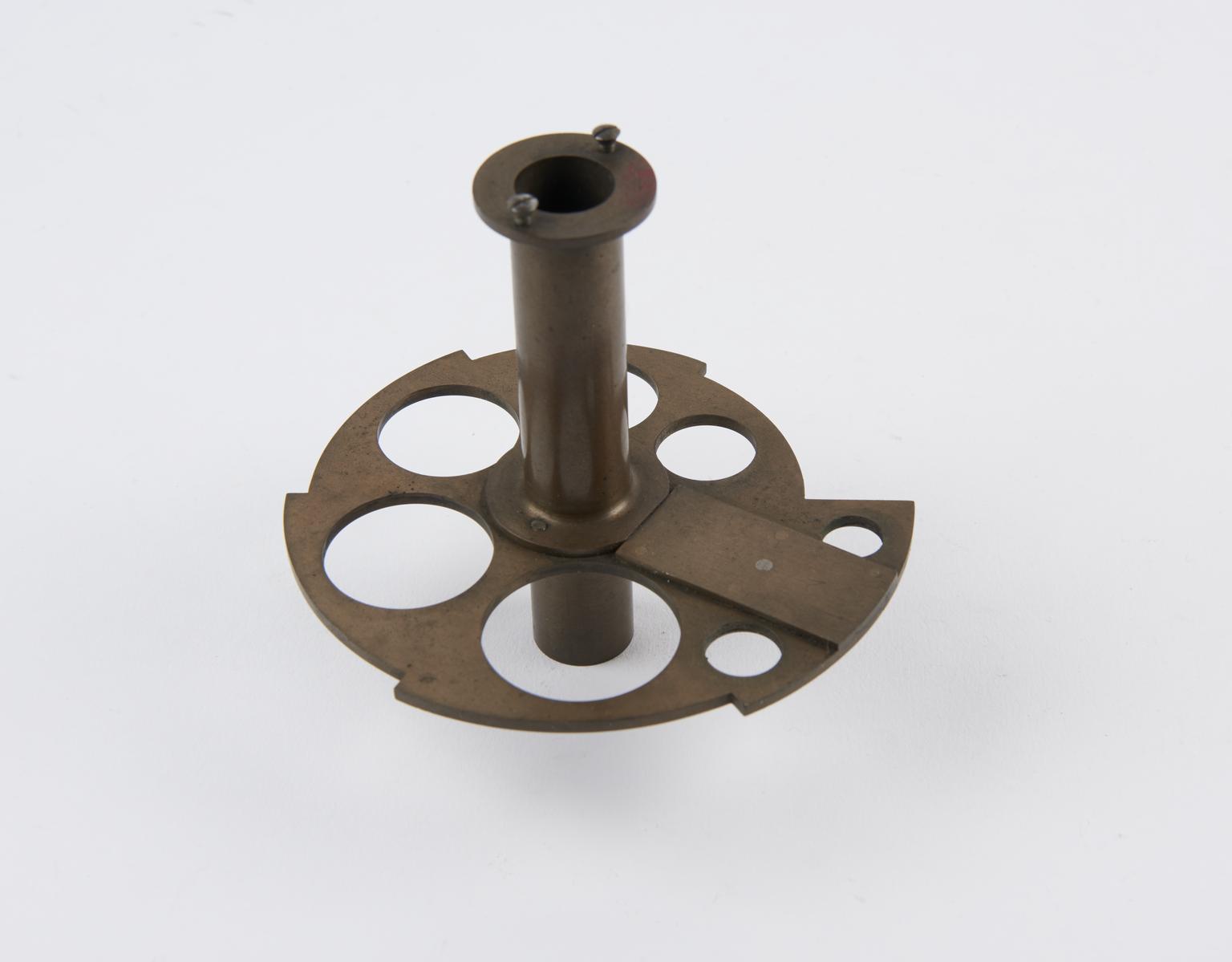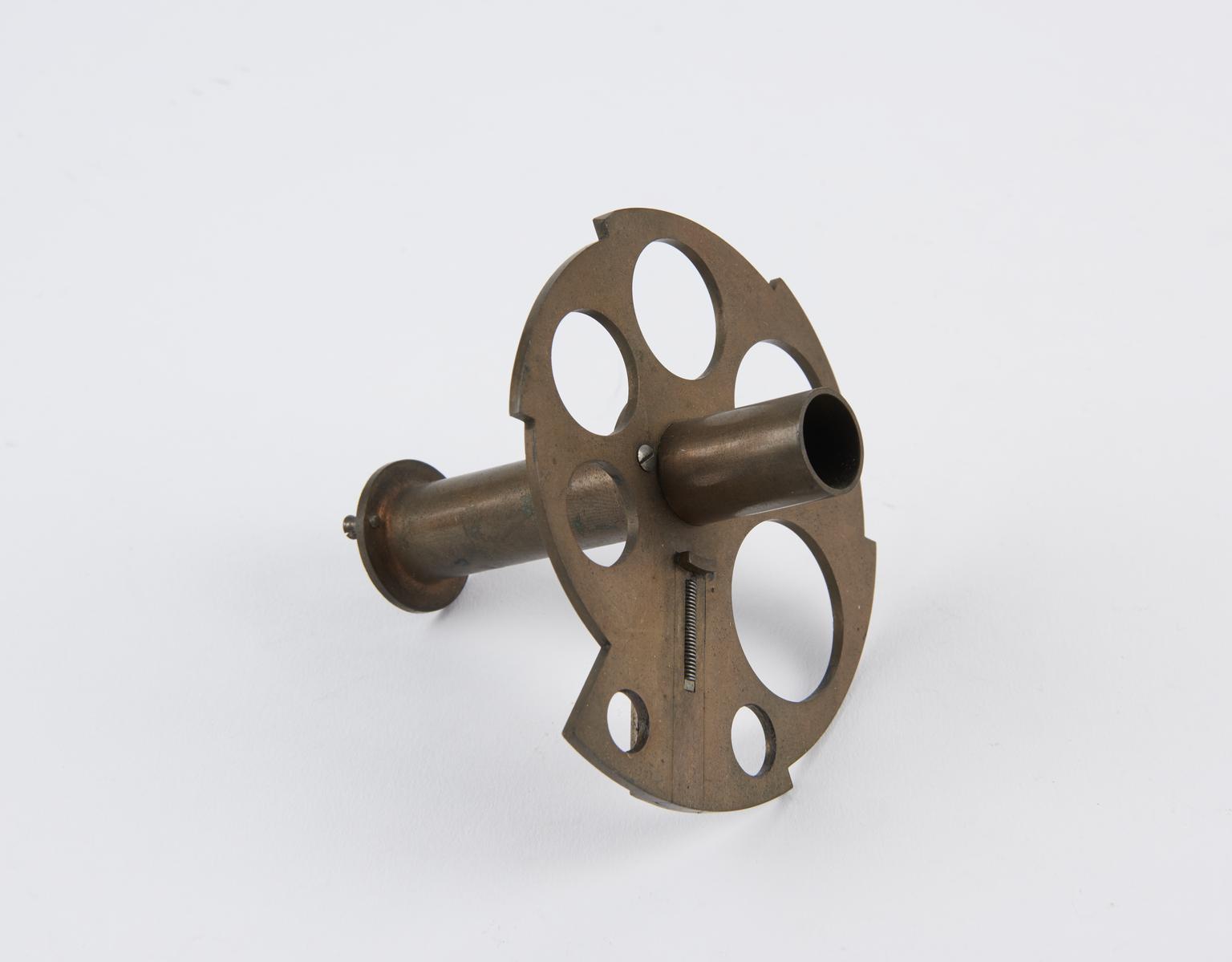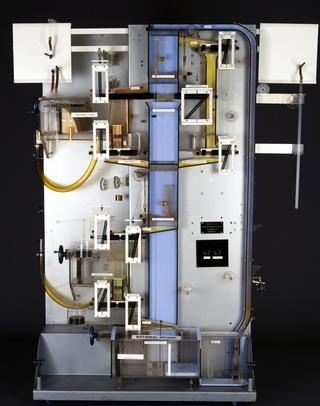Scheutz Difference Engine, third model, 1859
Main part of Scheutz difference engine, made by Bryan Donkin & Co. in 1859
More
Much of Victorian science, engineering and commerce made use of tables of numbers, calculated by hand by people known as ‘computers’. It could be mind-numbing work. This ‘difference engine’, invented by the mathematician Charles Babbage and brought to market by Georg and Edvard Scheutz, was an attempt to mechanise the process, reducing errors which could cost lives in applications such as navigation. It was bought by the British government to calculate figures for the English Life Table of 1864. This mammoth publication included life expectancies of different parts of the population, and was used by insurance companies to price their premiums.
- Measurements:
-
Overall: 480 mm x 1880 mm x 520 mm, 330 kg
- Materials:
- steel (metal) , lead (metal) , brass (copper, zinc alloy) , bronze (copper, tin alloy) and metal (unknown)
- Object Number:
- 1914-122/1 Pt1
- type:
- difference engine







